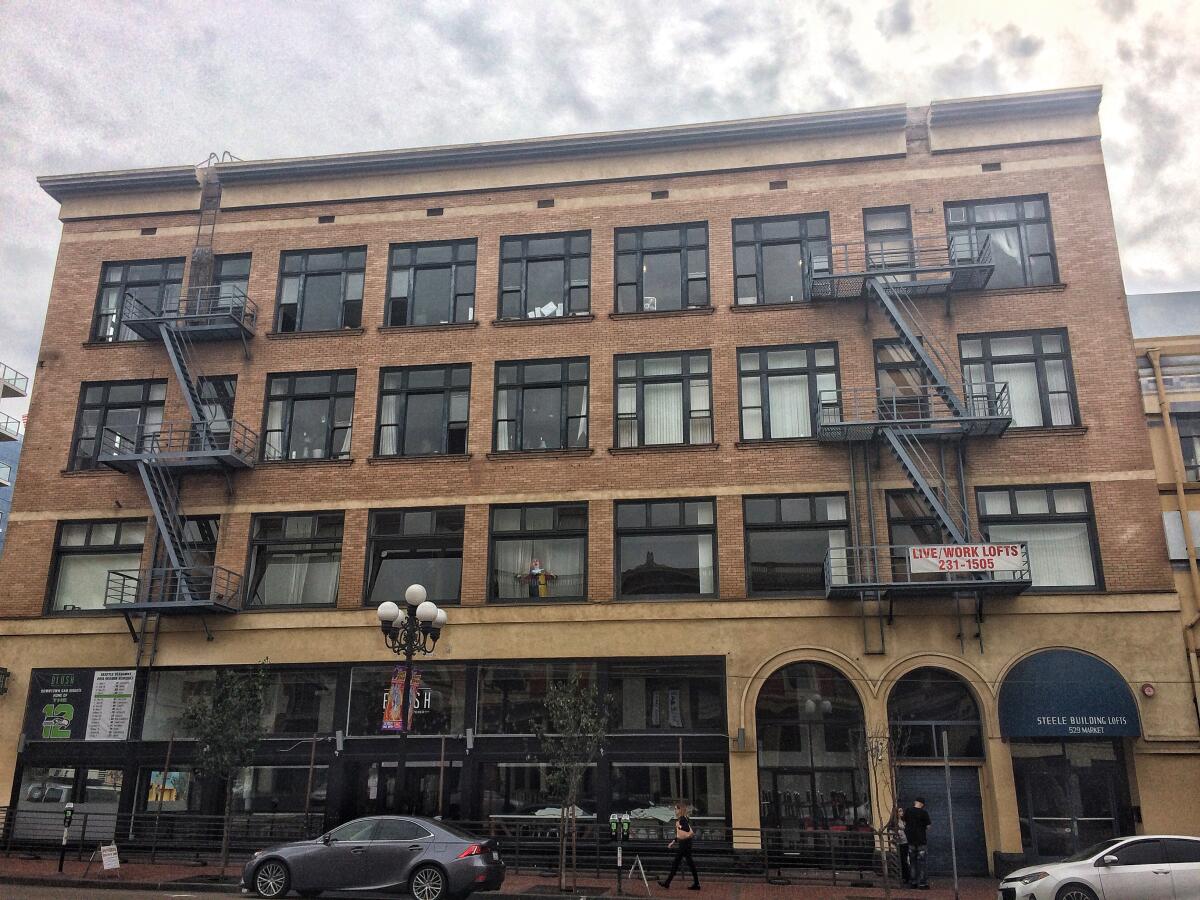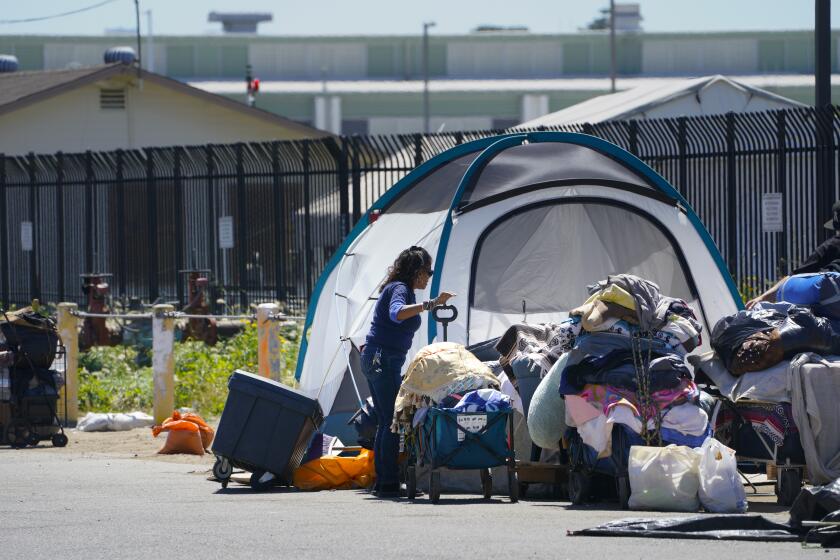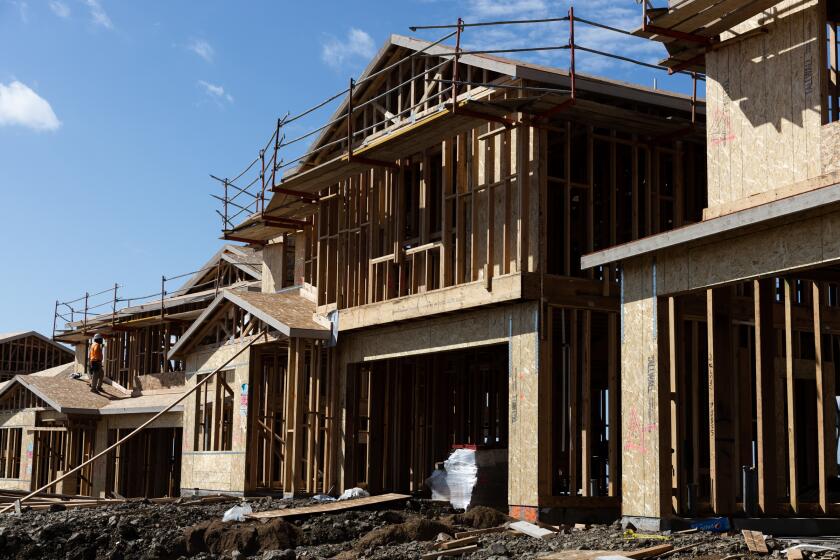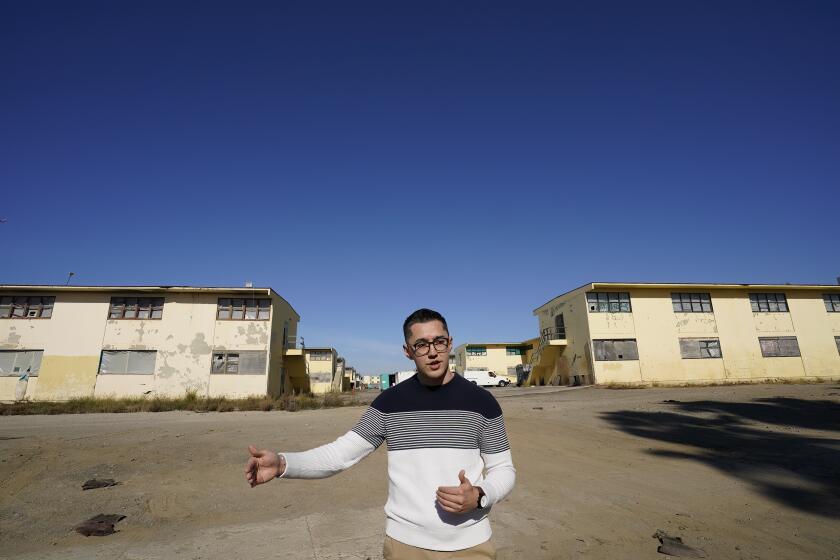Column: Missed opportunity: Bills to help turn commercial areas into housing failed

Retail-to-homes legislation didn’t get the attention of proposals to do away with single-family home zoning
With great fanfare, the California Legislature and Gov. Gavin Newsom recently agreed to end single-family home zoning as we know it.
How much two new laws will change neighborhoods or housing prices has been debated intensely and likely will take years to determine.
California’s housing prices are sky high and nobody disputes that an increasing portion of the population is being priced out of owning a home, while rents are eating up larger shares of income.
Yet, the Legislature this year left other two bills on the table that might have been even bigger game-changers in providing more housing.
One measure would have allowed housing to be built on most commercial sites without changing the zoning. The other would have provided grants to local governments to rezone commercial property for the development of housing affordable to low- and moderate-income residents.
These two proposals — Senate Bills 6 and 15, respectively — were not as controversial as the ones aimed at single-family zoning.
For one thing, a lot of the retail and office space targeted for transition to housing typically aren’t in traditional residential areas, or, at best, on the outskirts of neighborhoods. There’s less of a threat that the change would alter the community character because the existing uses tend to be high-impact, with considerable vehicle traffic and people coming and going.
Further, the idea of putting housing on commercial sites is attractive because many shopping centers, strip malls and office buildings are struggling or closing. Meanwhile, they tend to be on or near well-traveled thoroughfares and transit corridors. Among the criticisms of increasing density in single-family neighborhoods is the infrastructure wasn’t built to handle it.
That’s not to say there wouldn’t be concerns about whether there would be adequate parks, libraries and other residential amenities in the transformed commercial areas.
The bill to allow housing on commercial areas without a zoning change ran into familiar opposition. Local governments said the state would be usurping their authority. That was a major criticism of the successful bills.
SB 9, by Senate President Pro Tempore Toni Atkins, D-San Diego, essentially allows duplexes to be built on single-home lots “by right.” It also allows for lot splits under certain conditions, meaning two duplexes could be built on the property. SB 10 boosts density up to 10 units on lots in urban infill sites or in certain transit-rich areas.
It’s not clear why the commercial-to-housing bills didn’t make it, but one apparent unresolved dispute involved a labor issue. The proposals required developers to use a “skilled and trained” workforce to build the housing. That means, as The Associated Press pointed out, a certain percentage of workers must be either enrolled in or have completed state-approved apprenticeship programs, mostly run by unions.
Developers were opposed to that, contending the required wages would drive up the cost of building the homes. The State Building and Constructions Trade Council of California said that provision would guarantee reasonable, livable wages. Eliminating it would only mean greater developer profits, the council maintained.
That union labor requirement had already proven to be a deal-breaker on other bills, according to the CalMatters news organization. Such a provision was not included in previous unsuccessful housing bills that ran into stiff opposition, including one last year to build affordable housing in church parking lots, and another retail-to-housing measure.
That hurdle was not an issue in the bills to increase neighborhood density, at least at the end, in part because those measures involve small, often individually owned properties rather than big commercial areas ripe for potentially large projects.
Backers said the commercial conversion bills had great promise to facilitate more housing; AP said changing the zoning is “such a hassle that many developers don’t bother trying.”
Still, some jurisdictions already are headed in that direction. One of them is the city of San Diego.
San Diego’s “complete communities” concept encourage more housing coupled with nearby amenities such as parks. The city has pushed mixed-use projects that include retail/commercial on the ground floor with stories of housing above along transportation corridors.
Recently revised community plans, such as one adopted for Kearny Mesa last year, emphasize mixed-use development.
“The community plans seem to be open to changing (commercial) use to residential, said Gary London, senior principal at London Moeder Advisors.
“It’s not just the state or the city but there’s economic motivation to turn commercial property into housing,” he added.
He noted that he is working on some family-owned, legacy retail properties along some of central San Diego’s broad boulevards that are being turned over to a younger generation more willing to let go of the past — and potentially increase revenues from the property with housing.
For a long time, local governments pursued retail because the sales tax returns were greater than revenue from other areas, including housing. The coronavirus pandemic has had downward impact on retail operations and office buildings. It may still take some time to see how things ultimately shake out.
But long before COVID-19, brick-and-mortar stores had been struggling and closing amid competition from online shopping. And while no one is predicting the traditional office will become obsolete, the need for it may not be as great as before with the expectation that more people will continue working remotely.
It seems certain that efforts to turn those distressed properties into housing will grow, one way or another.
Don’t be surprised if state lawmakers take another swing at trying to make that happen faster.
Tweet of the Week
Goes to The Hill (@thehill).
“UPDATE: Arizona draft audit report shows Biden widened lead by 360 votes.”
Get Essential San Diego, weekday mornings
Get top headlines from the Union-Tribune in your inbox weekday mornings, including top news, local, sports, business, entertainment and opinion.
You may occasionally receive promotional content from the San Diego Union-Tribune.












